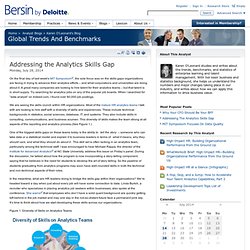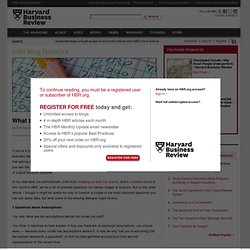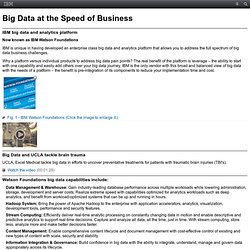

Google Analytics 101: 3 Key Things You Can Learn. Designing your new website, creating compelling content, and building out your social platforms is (sigh) the fun part.

The sometimes not so fun—but just as important—part? Analytics! After all, if you don’t know how people are interacting with your brand, you won’t know how to make it better. And while analytics can feel like a whole lot of overwhelming numbers, understanding that data is essential to better engaging your audience, improving your content, and building metrics of success around your PR, marketing, and advertising campaigns. So, where to begin? 1. Once you’ve installed Google Analytics on your website, you’ll have access to a Google Analytics dashboard. In addition to being really interesting, these stats can help you make business decisions moving forward. 2. Now that you know that (let’s say) 50,000 people are accessing your site each month, how long are those 50,000 visitors staying?
Remember: The longer, the better! Next, taking a look at “New vs. 3. The beauty of data visualization - David McCandless. To create his infographic about nutritional supplements, it took McCandless a month to review about 1,000 medical studies and design the visual.

Is that level of effort surprising, and do you think it’s worth it? Try out the interactive version that’s available on McCandless’s website. What engaged or surprised you? What, if anything, would you change to improve the user experience? Write a brief review and post it to the site. BIG DATA. Addressing the Analytics Skills Gap. On the final day of last week's MIT Symposium, the sole focus was on the skills gaps organizations are facing in trying to advance their analytics efforts – and what corporations and universities are doing about it.

A great many companies are looking to hire talent for their analytics teams – but that talent is in short supply. Try searching for analytics jobs on any of the popular job boards. When I searched for “data analyst” on Indeed.com, I found over 80,000 job postings. We are seeing the skills crunch within HR organizations. Most of the mature HR analytics teams I talk with are looking to hire staff with a diversity of skills and experiences. One of the biggest skills gaps on these teams today is the ability to tell the story – someone who can take data or a statistical model and explain it to business leaders in terms of what it means, why they should care, and what they should do about it. Figure 1. What to Ask Your "Numbers People" - Tom Davenport. By Tom Davenport | 9:00 AM July 12, 2013 If you’re a manager working with the analysts in your organization to make more data-driven business decisions, asking good questions should be one of your top priorities.

Many managers fear that asking questions will make them appear unintelligent about quantitative matters. However, if you ask the right kinds of questions, you can both appear knowledgeable and advance the likelihood of a good decision outcome. In my new book (co-authored with Jinho Kim) Keeping Up with the Quants, and in a related article in this month’s HBR, we list a lot of possible questions for various stages of analysis.
But in this short article, I thought it might be useful not only to mention a couple of the most important questions you can ask about data, but what some of the ensuing dialogue might involve. 1.Questions about Assumptions You ask: What are the assumptions behind the model you built? 2. You ask: How are the data you gathered distributed? You get the picture. What is big data? - Bringing big data to the enterprise. TDWI Big Data Maturity Model and Assessment Tool Sponsored by IBM, this big data maturity online assessment tool enables organizations to objectively measure the maturity of an enterprise’s big data analytics program across five dimensions that are key to deriving value from big data analytics: organization, infrastructure, data management, analytics, and governance.

Take it today! Big Data Hadoop Solutions, Q1 2014 Descritption: Read the report to see why IBM InfoSphere BigInsights was named a leader and how it stands in relation to other big data Hadoop vendors. Read the report The top five ways to get started with big data Learn how to determine which of the five can be your first step into big data.
Get the white paper The FOUR V’s of Big Data. Turning Big Data Into Smart Data: 5 Lessons For Marketers From The Obama Campaign. If nature abhors a vacuum, the business world adores a buzzword.

And for the past few years, data--specifically big data--has been among the most buzzy. That’s been especially true since the 2012 election in which President Obama’s campaign made waves for its surgical use of data in winning a second term. Given its stature in the marketing world, big data isn’t very well understood. S big data resource library - Learn more about big data.